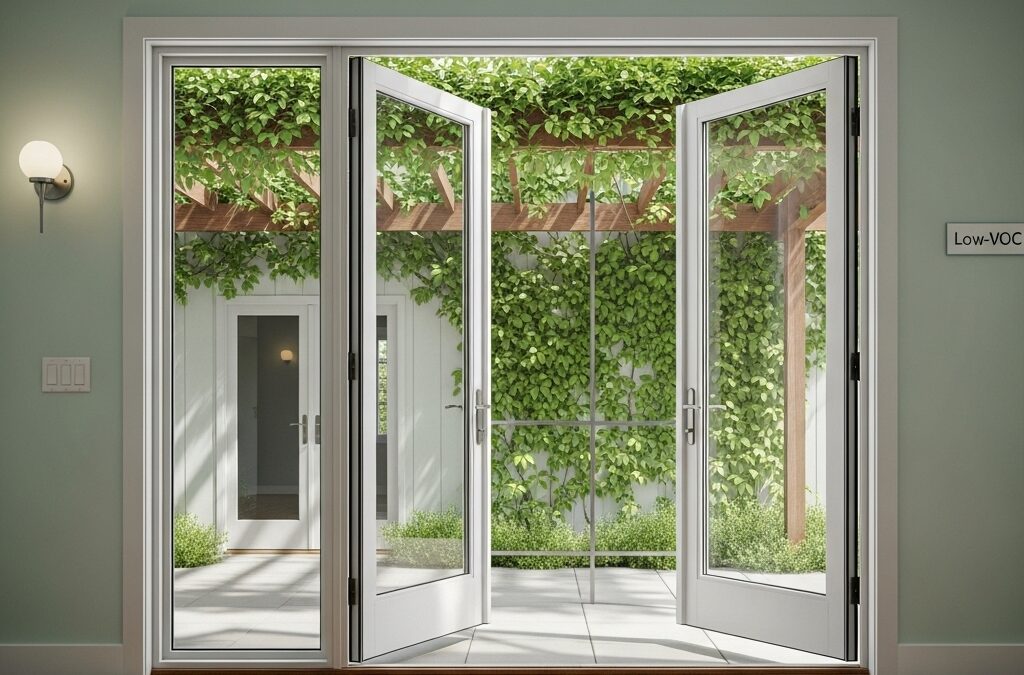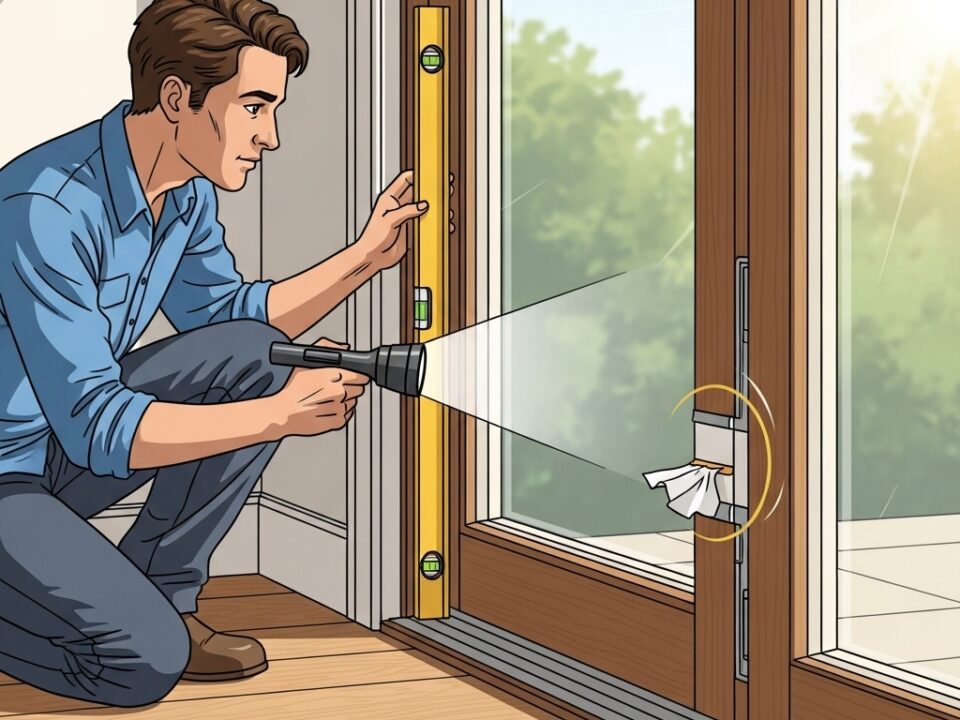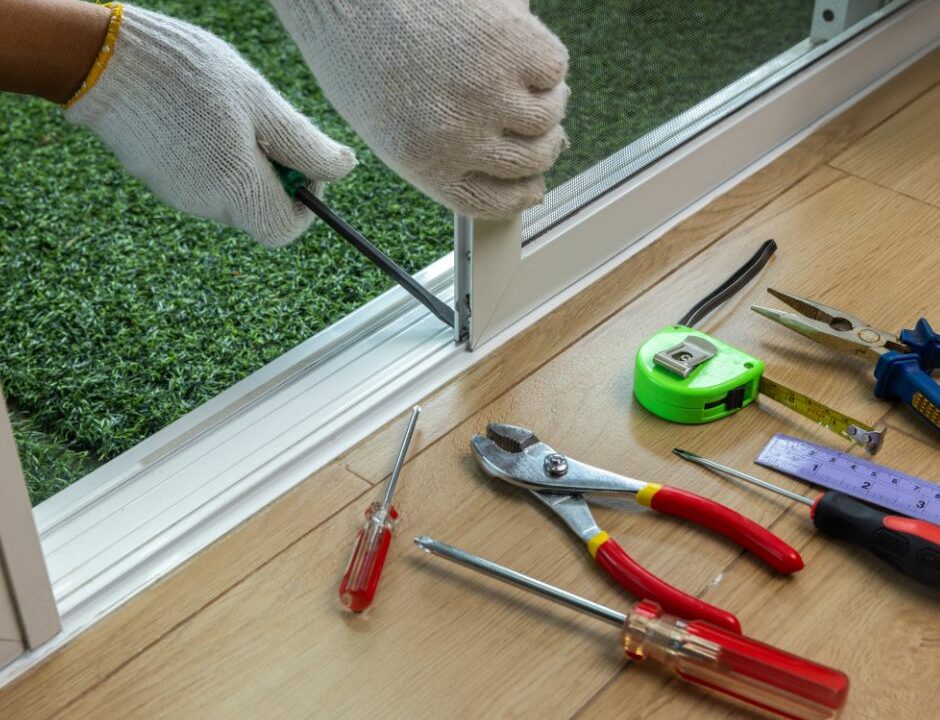Eco Friendly Patio Doors Choices in Woodland Hills, California

Patio Doors Inspection Essentials in Woodland Hills, California
November 18, 2025Choosing Eco-Friendly Patio Doors for Woodland Hills Living
Woodland Hills homeowners have a front-row seat to the power of the sun. Our summers bring long stretches of heat and brilliant light, while evenings often invite breezy, open-air living. Selecting eco-friendly patio doors here is about more than a label; it’s about combining materials and design choices that tame afternoon heat, invite natural ventilation, and last for decades with minimal upkeep. When you do it right, your home feels calmer, your energy use steadies, and your connection to the outdoors becomes effortless.
Eco-friendly doesn’t mean compromising on style or function. Today’s best doors offer slim profiles, durable finishes, and glass that fills a room with daylight without letting heat run wild. If you’re at the point of exploring options, it helps to see how far the category has come by browsing modern patio door technologies that blend sustainability with everyday convenience.
Material Matters: Sustainable Choices That Endure
The most sustainable product is the one that performs well and lasts. In our valley climate, frames must handle high UV exposure, daily thermal swings, and the occasional rush of wind-driven dust. Fiberglass frames stand out for stability; they expand and contract very little, so seals stay tight season after season. Vinyl has strong insulating value and resists corrosion, particularly valuable in dry, dusty environments. Thermally improved aluminum offers the slimmest sightlines while interrupting heat flow through the frame—a major step up from older, conductive aluminum systems. For those who love the warmth of wood, interior wood backed by exterior cladding balances tactile beauty with durability.
When evaluating eco credentials, look beyond the material name. Ask about recycled content in aluminum, the source of any wood components, and the longevity of finishes in high-UV settings. Durable hardware and finish systems reduce replacement cycles, which is a green win in itself.
Glazing for a Hot-Summer, Mild-Winter Climate
Glass is where eco-friendly performance becomes tangible. In Woodland Hills, the right insulated glass unit can be the difference between a room you avoid at 4 p.m. and one that stays comfortably bright. Low-emissivity coatings reflect infrared heat while admitting visible light, and a selective formulation on west- and south-facing openings helps keep afternoon heat at bay. Argon gas fills slow heat transfer, and warm-edge spacers protect against edge-of-glass condensation on cooler mornings.
While triple-pane glass has its place, most homes here see excellent results from high-performing double-pane units tuned for solar control. If exterior noise is a concern, laminated glass adds acoustic comfort with minimal impact on thermal efficiency. That combination—smart solar control and a calmer soundscape—often makes a living space feel more restful and reduces the urge to crank the thermostat.
Daylighting and Natural Ventilation
One of the greenest strategies is free: use daylight and airflow. Patio doors are the largest operable openings in many homes. Designing with ventilation in mind means thinking about how air will move across rooms. If your layout allows, open a window opposite the door in the evening to draw cooler air through. A well-balanced slider or a pair of French doors that open wide can purge accumulated heat quickly, which lowers overnight cooling needs and sets the stage for a more comfortable morning.
Daylighting is equally important. The goal is to fill rooms with soft, usable light without glare. Exterior shading—pergolas, trellises, or deep roof overhangs—knocks down high-angle sun while preserving brightness. Inside, lighter-colored surfaces bounce light deeper into the room, letting you keep electric lights off longer. These adjustments are subtle and cumulative, creating a home that feels naturally attuned to our climate.
Installation Quality and the Home Envelope
Even the greenest door underperforms if it’s installed poorly. A tight, well-flashed installation ties your door into the home’s weather-resistive barrier, guiding water out and keeping air from sneaking in. Low-expansion foam around the frame, compatible sealants, and a well-detailed sill pan protect your walls and floors from moisture. In our dry climate, you’ll notice the benefit most on windy days when a properly sealed door keeps fine dust at bay and preserves indoor air quality.
Think of the patio door as part of a system. If you’re upgrading, consider modest envelope improvements nearby—air sealing adjacent walls, adding an efficient ceiling fan to support nighttime cooling, or fine-tuning shading to complement the new glass. Small, coordinated steps make each component’s performance more meaningful.
Durability as Sustainability
Eco-friendly choices last. In Woodland Hills, durability means resisting UV, staying aligned through heat cycles, and shrugging off dust and the occasional splash from a nearby pool. Look for robust weatherstripping that won’t compress flat in a couple of summers, rollers with sealed bearings, and finishes rated for high-UV exposure. Maintenance is part of the equation, too. A quick track vacuum after windy days, a wipe-down of frames, and a periodic check of seals keep performance high with minimal effort.
When doors keep doing their job year after year, you avoid the environmental and financial costs of early replacement. That’s sustainability you can feel: fewer repairs, fewer disruptions, and steady comfort.
Design That Connects Indoors and Out
Eco decisions include how a door shapes daily life. Wider clear openings make it easy to live outdoors in the evenings, when it’s naturally cooler. Multi-panel sliders and folding systems can open expansive sections of wall, inviting air movement and reducing reliance on mechanical cooling during pleasant hours. At the same time, tight seals and advanced glass preserve energy when everything closes up in the afternoon.
Consider orientation. West-facing doors ask for the most solar control; north-facing openings can prioritize visible light. If shade trees or a canopy already protect your patio, you can choose glass with a higher visible transmittance to brighten interiors without sacrificing comfort. Aligning the door specification with real-world conditions is one of the most powerful eco-friendly moves you can make.
Healthy Materials and Indoor Air Quality
Eco-friendly also means healthy. Low-VOC sealants and finishes reduce off-gassing. Frames that resist dust accumulation and are easy to clean contribute to a fresher-feeling home during long dry seasons. If anyone in your household is sensitive to allergens, tight seals and smooth-operating screens are extra valuable, allowing you to ventilate in the evening without inviting dust inside.
Upgrading from Older Doors
Many homes in the area still have legacy aluminum sliders with single or early double-pane glass. Upgrading to modern insulated units with selective low-E coatings, improved interlocks, and better frames is one of the most impactful eco moves available. You’ll feel the change on the first hot day after installation: reduced glare, fewer long AC cycles, and a softer ambient light. Exploring current patio doors will give you a sense of how features map to your specific exposure and lifestyle.
Local Examples of What Works
On a west-facing home near Mulholland Drive, swapping a tired slider for a fiberglass-framed unit with solar-control glass and adding a slatted pergola cut afternoon heat dramatically. The family started opening the door nightly to flush the house, and their living space felt calmer even during a heat wave. Another home tucked closer to the foothills opted for laminated glass to take the edge off afternoon street noise; paired with robust weatherstripping, the doors made the great room much more peaceful without losing the sense of openness.
FAQ
Q: Are triple-pane patio doors necessary in Woodland Hills?
A: Not usually. High-quality double-pane units with selective low-E coatings deliver excellent results in our hot-summer, mild-winter climate. Triple-pane can add acoustic or thermal benefits in certain cases, but it’s rarely required.
Q: What frame material is the greenest choice?
A: The greenest option balances recycled content, durability, and performance. Thermally improved aluminum with recycled content, fiberglass for stability, or well-protected wood interiors can all be eco-friendly when specified and maintained properly.
Q: How do patio doors improve indoor air quality?
A: Tight seals keep dust out during windy spells, while smooth-operating screens enable evening ventilation without inviting pests. Low-VOC materials in finishes and sealants further support a healthier interior.
Q: Will new patio doors make a big difference in cooling needs?
A: Yes. Better glass and improved sealing reduce heat gain and air leakage, which eases the cooling load. Many homeowners feel more even temperatures and less reliance on the thermostat during peak heat.
Q: What maintenance keeps eco-friendly doors performing?
A: Regular track cleaning, occasional lubrication with a dry silicone, and periodic weatherstrip inspection are simple habits that preserve efficiency and extend service life.
Open the Door to a Greener Home
If you’re ready to dial in comfort and sustainability, start where indoor and outdoor life meet. The right patio doors brighten your days, calm your evenings, and steady your energy use without demanding constant care. Take a look at today’s high-performance patio doors and picture how effortlessly your Woodland Hills home could breathe with the seasons.




